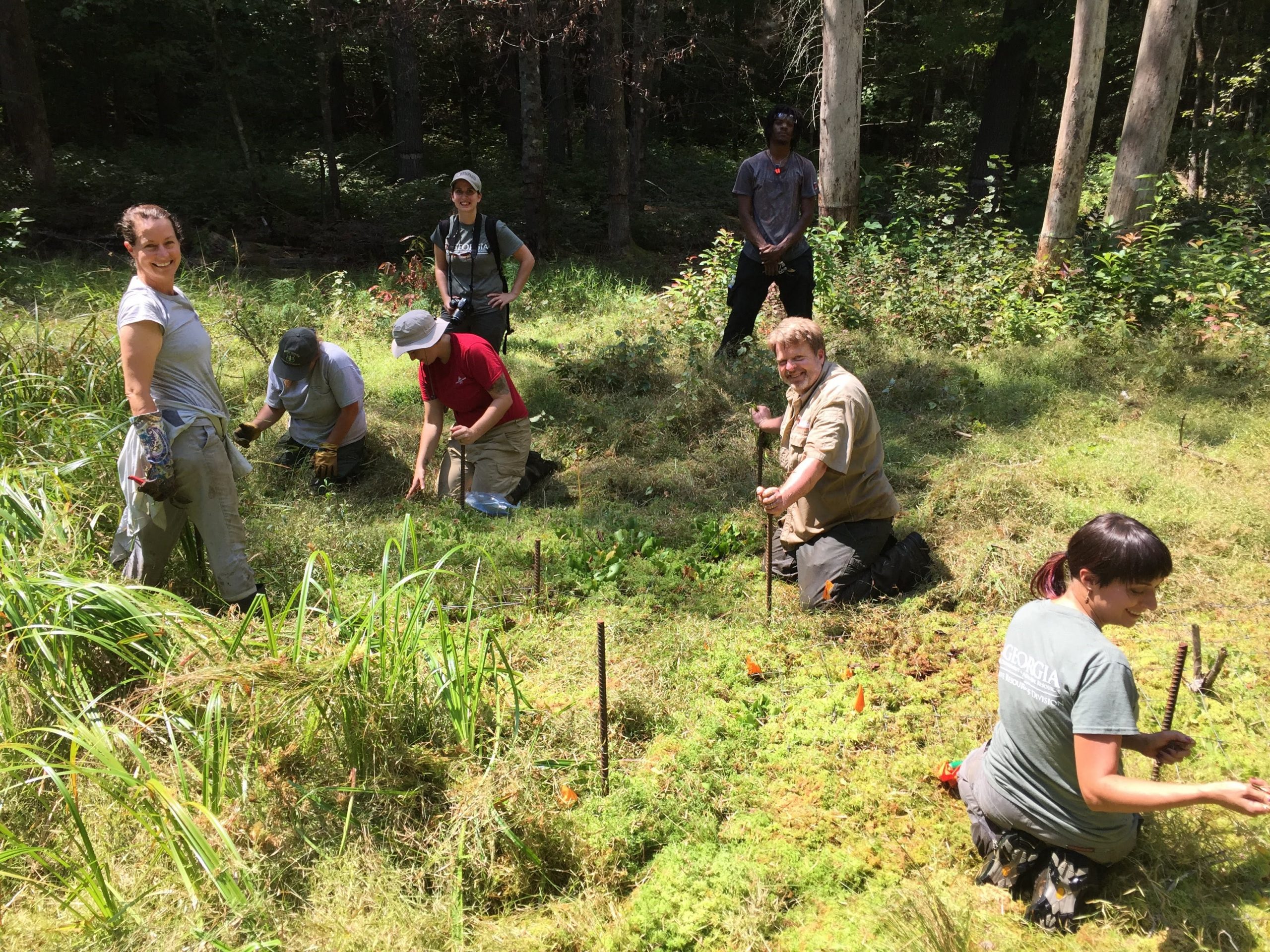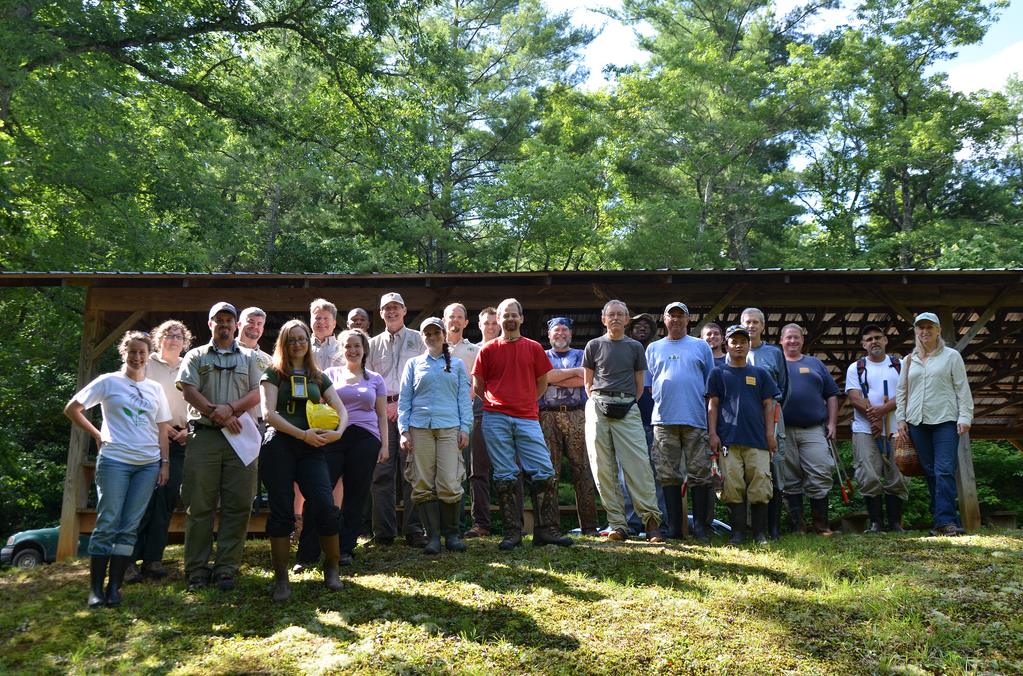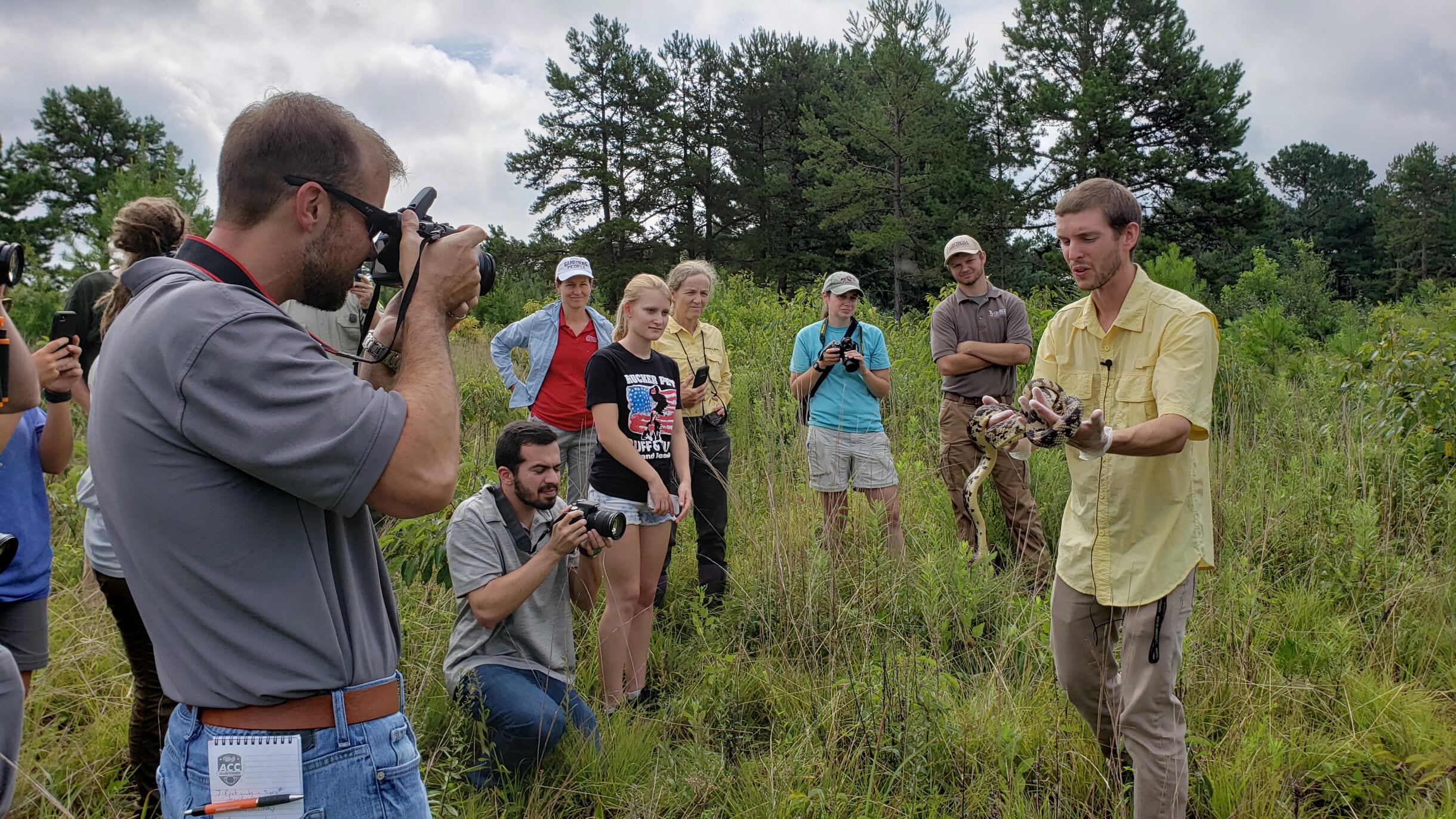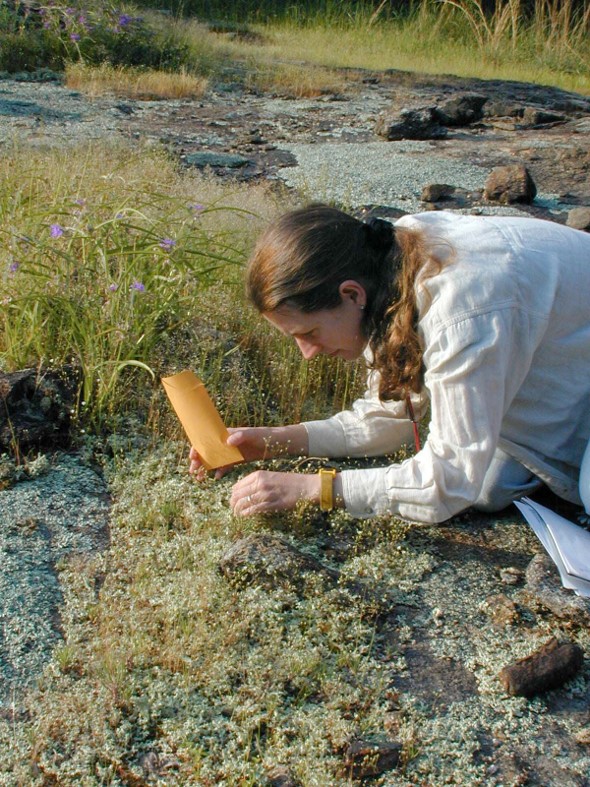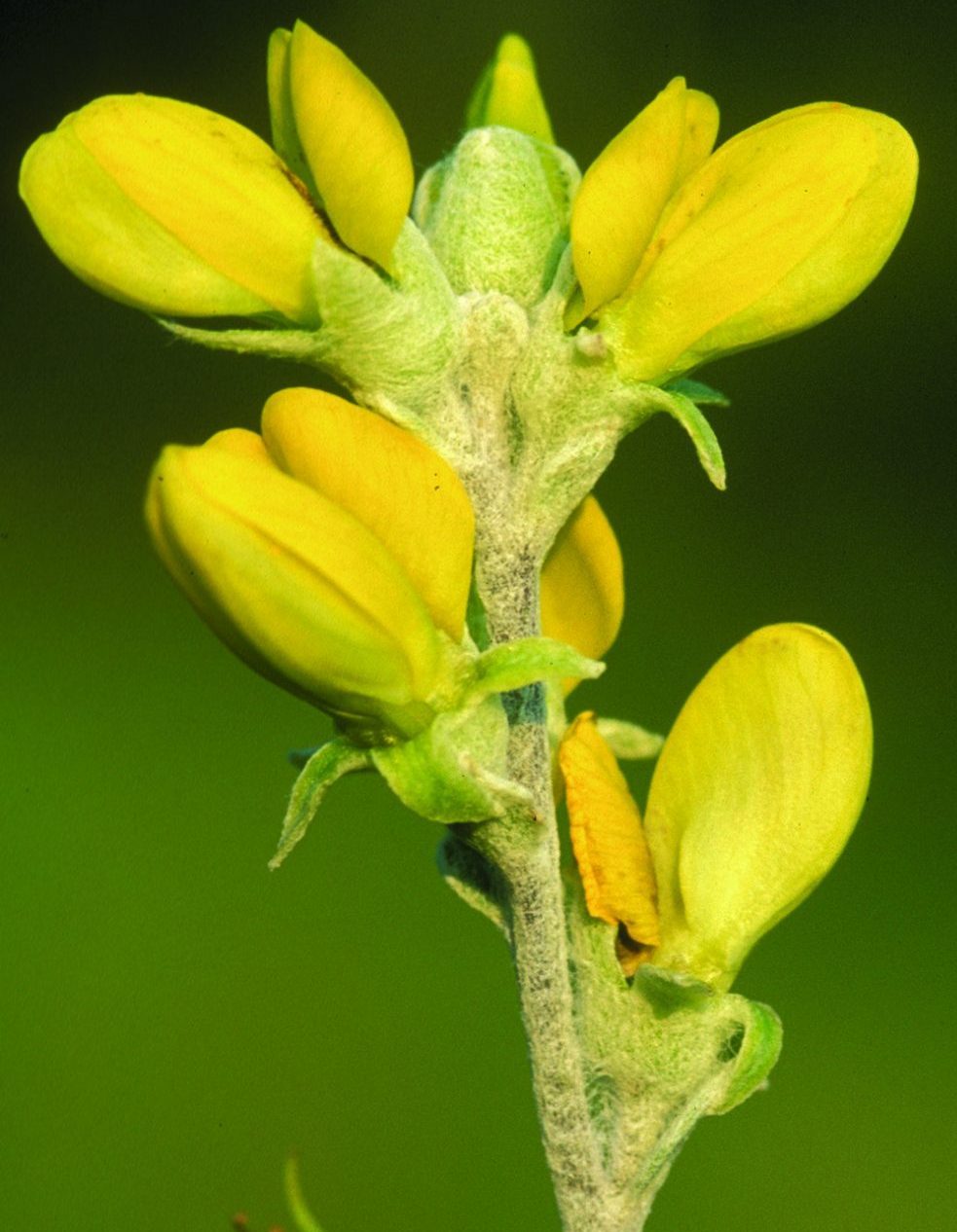Jennifer Ceska, Conservation Coordinator, State Botanical Garden of Georgia
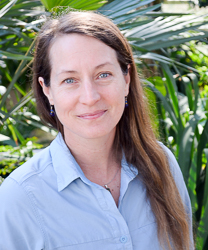
Amidst these times of great human suffering, it is important to remember rays of light that can outshine the darkness. Our Conservation Champion Jennifer Ceska is such a radiant being. She customarily calls colleagues “beloveds.” When she wraps her big smile and warm heart around a crowd, it will follow her anywhere. Her nurturing attention has helped the Georgia Plant Conservation Alliance thrive over many years and even during a pandemic. We wish we could clone her!
When did you first fall in love with plants?
I fell in love with plants when I was a little girl growing up in Grand Prairie, Texas. My Mom always had the most glorious flowers in a large garden bed lined with railroad ties in our front yard; they were the brightest colors in our neighborhood. We didn’t have much money, but we had petunias of every color combination. Our neighborhood was an LBJ-funded new development, quite literally in the middle of open prairie and pastures. Our sidewalks were lined spontaneously with Oenothera speciosa. We called them buttercups. They were my most favorite. There was a single bluebonnet in a field behind our school. My class circled it in alarm, with someone shouting, “Don’t step on it or they’ll put you in jail!” This was the God’s own truth as far as we were concerned. Though there have been detours, I’ve followed wildflowers ever since.
What was your path to becoming a botanist with the Conservation Coordinator at the State Botanical Garden?
I knew I wanted to do something very applied, both in graduate school and in my career. And I knew I wanted to work in a museum, and at best, one tied to a university. I thankfully received the Catherine Beattie Fellowship in 1994, awarded by the CPC and the Garden Club of America, funding my travels to botanical gardens with well-established plant conservation programs. We chose six CPC gardens on the east coast. That experience helped me to draft a strategic plan for developing a plant conservation program for the State Botanical Garden of Georgia, my home garden in graduate school. When I presented my exit seminar to the garden’s board of advisors, the chair, Mimsie Lanier, approached me and my major professor, Jim Affolter, offering to raise funds for a new conservation coordinator position. It took Mimsie two years and me holding tight through a series of temp jobs in offices around town, but she did it!
What about working with plants has surprised you?
I’ve always been surprised by how poor the relationships are between people and plants. The elders in my life were all gardeners, foragers, hunters, and fisherfolk, and they all knew plants. Garden club members have always been encyclopedic about plants. University campus was a haven for a small group of people who fell head over heels for plants. But most of the people in my daily life – my friends, neighbors, Gen Xer cohort, and audiences in the early days of my career – didn’t know plants could be endangered, didn’t know plants were essential to some animal species, and didn’t see plants when they were just walking down the street. I’ve always stopped to poke around at plants and critters, rocks and twigs. I see great change in this now, and the new generations coming up through the university knock me over with their incoming knowledge of plants, gardens, culinary and medicinal skills, and the insects and birds associated with native plants.
What is your role within the Georgia Plant Conservation Alliance (GPCA), and what do you see as GPCA’s role in conservation?
I serve as the program coordinator for projects and partners in the GPCA, mostly cajoling extremely dedicated conservation biologists of all disciplines to work together on species recovery actions for Georgia’s imperiled plant populations. Truly, they are all rockstars of plant conservation and habitat restoration. I get to celebrate their work, foster relationships between organizations, keep my eyes and heart open to possible connections and collaborations. This team of folks in the GPCA have worked to develop an inclusive and safe space for partnership and a commitment to collaboration that enables organizations to leverage small resources into great accomplishments. People in plant conservation work have to deal with ever-increasing pressures and setbacks on the species we are working to recover, and this can overwhelm the spirit. We lift each other up, and we work hard to celebrate the small victories like first seeds in collection, first germination of a rare species ex situ, or the first year a reintroduced plant flowered in situ.
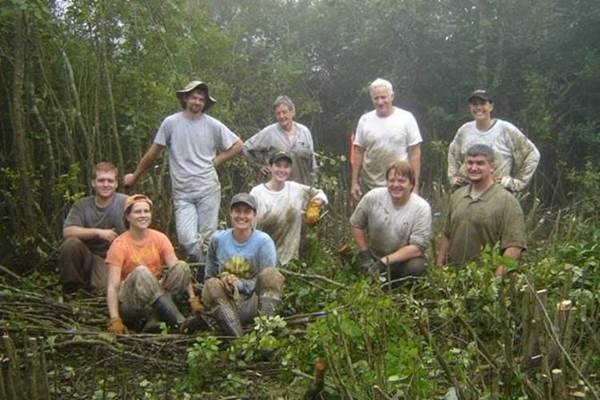
How did you pull together the GPCA Annual Symposium in the midst of COVID-19?
We had already invited speakers for our usual May meeting, before all university gatherings had to be cancelled because of COVID-19. Our colleague presenters were willing to present virtually, even though that can be challenging. We talked with campus experts and prepared the speakers with ways to engage the audience including polls, videos, and facilitated discussions. We had tips for best viewing and encouraged everyone to take care of their brains during the four-hour meeting. The speakers were all fantastic, from PhD researchers to undergraduate students, from Atlanta Botanical Garden specialists to Georgia DOT game-changing partners. Everyone in GPCA was invited to submit and quickly narrate their own images for “Postcards from the Field.” We love hearing everyone’s field stories for Postcards at our regular meetings, but this meeting welcomed images of home offices and cats and gardens and sweethearts and backyard birds and frogs, enabling us to glimpse our friends’ lives and see that they are fine. With more than 65 people, we had more participation in the virtual meeting than we have had for in-person meetings. And many partners have since replied that they were grateful it was online, because federal travel budgets or teaching obligations often prevent them from attending. We may add a virtual element to all future GPCA meetings.
Why do you think it was important to still do the symposium/bring people together?
One of the most powerful things about the GPCA is our time together, face-to-face, fostering relationships between very diverse organizations, building trust, sharing resources and expertise, sharing techniques and tools, and just spending time with our plant tribe, folks who get our humor and our passion for plants in all their infinite detail. We meet annually every May, and the thought of not meeting face-to-face was disheartening during an already gutted year. Field work plans and goals laid in February fell flat. We decided to try a group Zoom meeting so we could, at least, see each other’s faces. So that was the primary goal for this meeting – to see each other and connect.
What advice/words of hope do you have for garden conservationists in these trying times?
I will share words that have been shared with me, hoping that these are well known to all of my CPC kin. This is a pain-filled and unnerving year, and it is okay to temporarily let go of some responsibilities to which we feel so profoundly committed. We might not be able to collect those endangered seeds this year. We might not get to have a work party for that critically imperiled habitat. We might not have the steam to generate that article or paper. And that is okay. Our goal is to take special care of ourselves and our loved ones and to get through this year together. Plant conservation requires long-term commitments.
